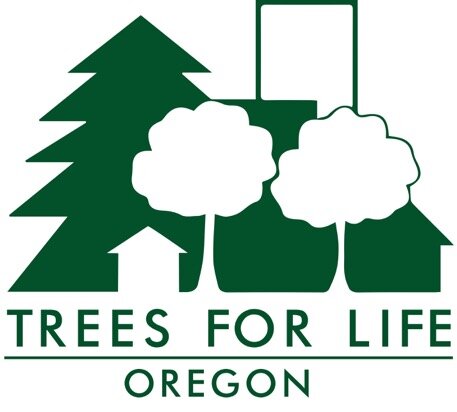Trees for Life Oregon Co-Sponsors TDR Webinar with the Home Builders Association
On May 4, 2021 Trees for Life Oregon partnered with the Home Builder’s Association’s Portland Building and Urban Development Council to help spotlight a new but little known zoning code provision—transfer of development rights, or TDR, for tree preservation. Watch the webinar here, Access Passcode: PBUD+T4LO.
TDR allows sending site owners with trees they want to preserve to transfer the unused development potential to another site they own or to sell those rights to another developer. The receiving site earns added floor area ratio, or FAR, that typically translates into an added story.
TDR has been used nationwide to preserve historic homes or rural land outside of cities. Applying it specifically to urban tree preservation is something new.
The novel option, in effect since March 2020 and detailed here, applies to sending sites zoned for multi-dwelling. It aims to preserve Douglas-fir groves in east Portland while encouraging builders to create more affordable housing in other multi-dwelling or commercial/mixed use sites. Webinar speakers were City Planner Bill Cunningham of the Bureau of Planning and Sustainability, who led the set of changes; Allison Reynolds, a land use attorney at Stoel Rives who handles TDR transactions; and Michael Murphy, TDR Manager for King County, Washington’s Department of Natural Resources and Parks. See their respective presentations here, here, and here.
A few takeaways from the webinar (Access Passcode: PBUD+T4LO):
Portland needs a matchmaker to facilitate TDR transactions. Having an entity--a public agency or a nonprofit such as a land trust--match-make between selling and receiving sites is crucial to simplifying the transaction for potential participants. Indeed, simplicity is one of the four ingredients of a successful TDR program, according to King County’s Michael Murphy. King County itself buys TDR from rural landowners, investing the revenue in new conservation of rural lands. The county, which includes Seattle, also assumes the roles of matchmaker and advisor for private TDR transactions—the kind Portland is more likely to have. he county “holds both parties’ hands,” said Murphy.
Equity issues. City planners intended the new provision to promote tree preservation in east Portland, but some attendees voiced concern about equity: How would the TDR program prevent a builder from protecting trees on a site in (already leafy) Southwest Portland and transferring density to an east Portland site with large trees? Post-webinar, City planner Bill Cunningham explained to Trees for Life Oregon that:
The FAR transfer would not allow more of the receiving site to be covered with development; it would permit buildings to be taller by allowing the full three stories allowed in the RM1 zone, the most common zone in east Portland.
The FAR transfer wouldn’t change minimum landscaping requirements or deep rear setback requirements in east Portland, nor would it change Title 11 tree preservation or planting requirements.
“Because the receiving sites can be in commercial zones,” said Cunningham, “which are typically along transit corridors and tend to have fewer large trees but are often in high-value areas where developers often want to build larger scale, this creates a greater number of potential transit-oriented receiving sites that could accommodate larger scale development without involving the removal of trees.” He added that many of the underused sites in commercial zones have older commercial buildings with large parking lots such as those along corridors like 82nd Avenue, SW Barbur, and Sandy Boulevard. These sites often have no trees to begin with.
Monitoring. Another concern was about how program outcomes will be monitored and evaluated. Currently the City’s online permitting system doesn’t track TDR for tree preservation because no one’s applied to use it, said Christine Caruso of the Bureau of Development Services. The bureau is waiting to see what happens, she said. King County tracks TDR data and monitors sending site easements for compliance. Could Portland step up to do this?
Mike Mitchoff of the Portland Building and Urban Development Council, who chaired the webinar, summed up local developers’ concerns about the new option by asking, “Is the juice worth the squeeze?”
Clearly, unless the City itself or in partnership with a nonprofit makes this new option attractive to builders by facilitating TDR match ups and advising parties along the way, this zoning code provision intended to increase quality of life through trees for low-income residents in east Portland could continue to lie unused.
